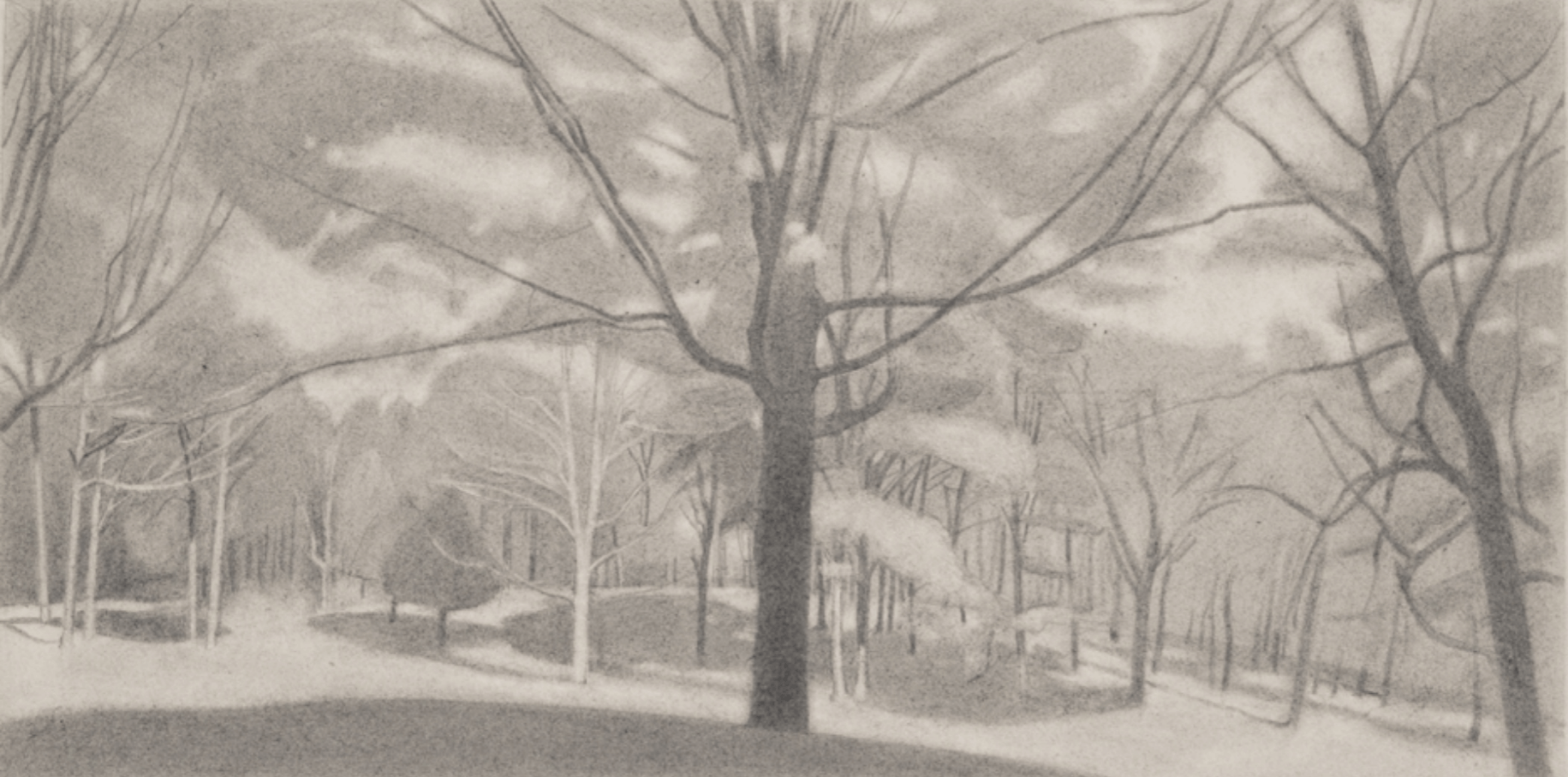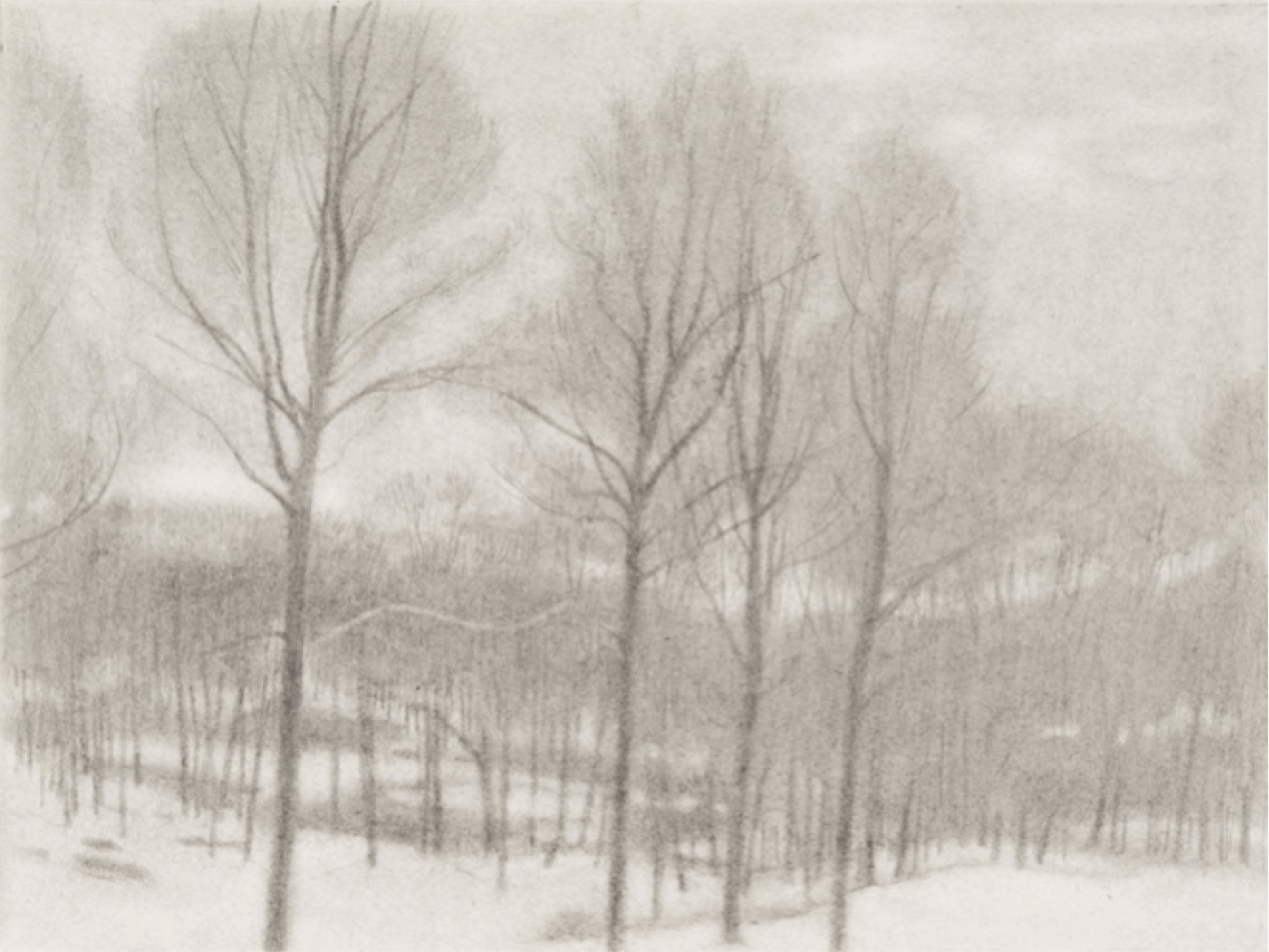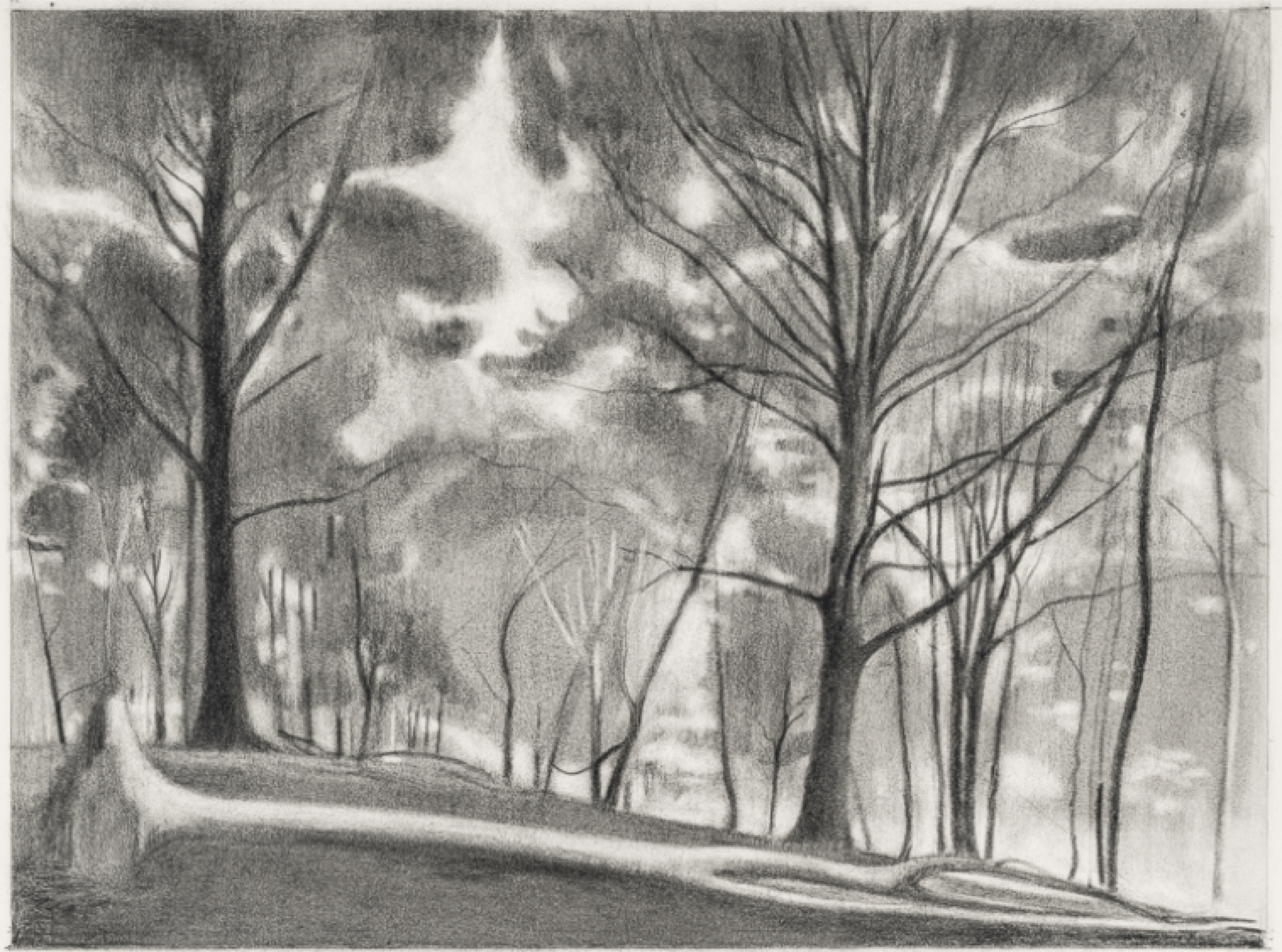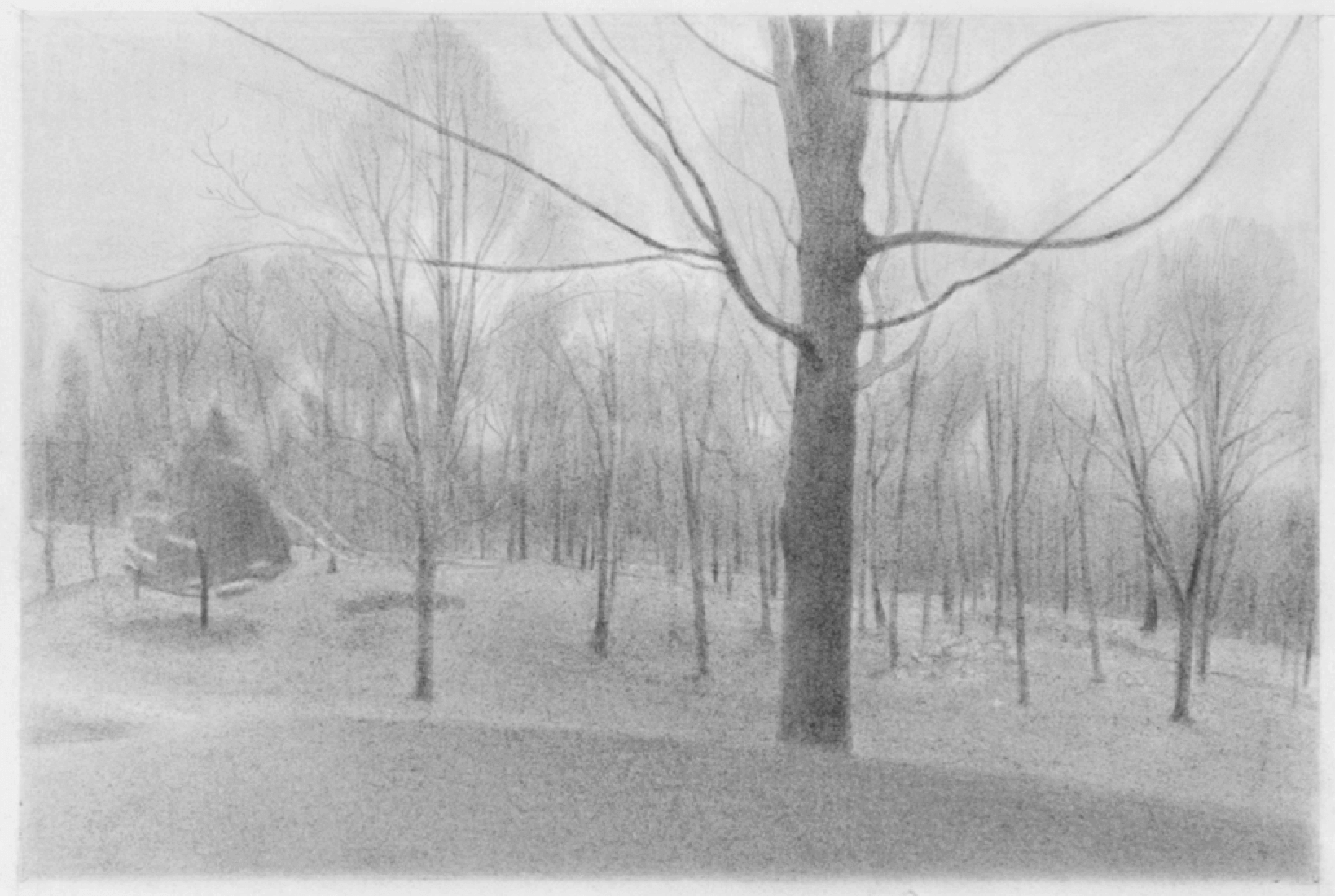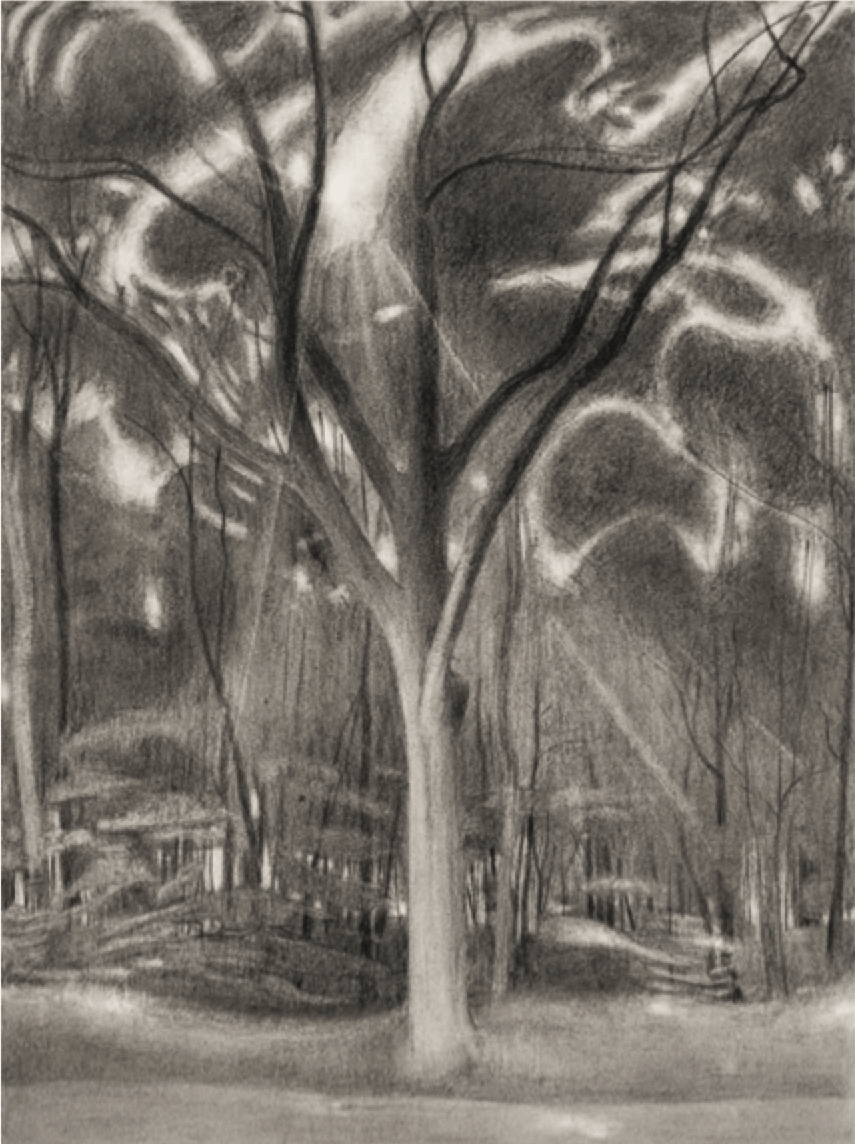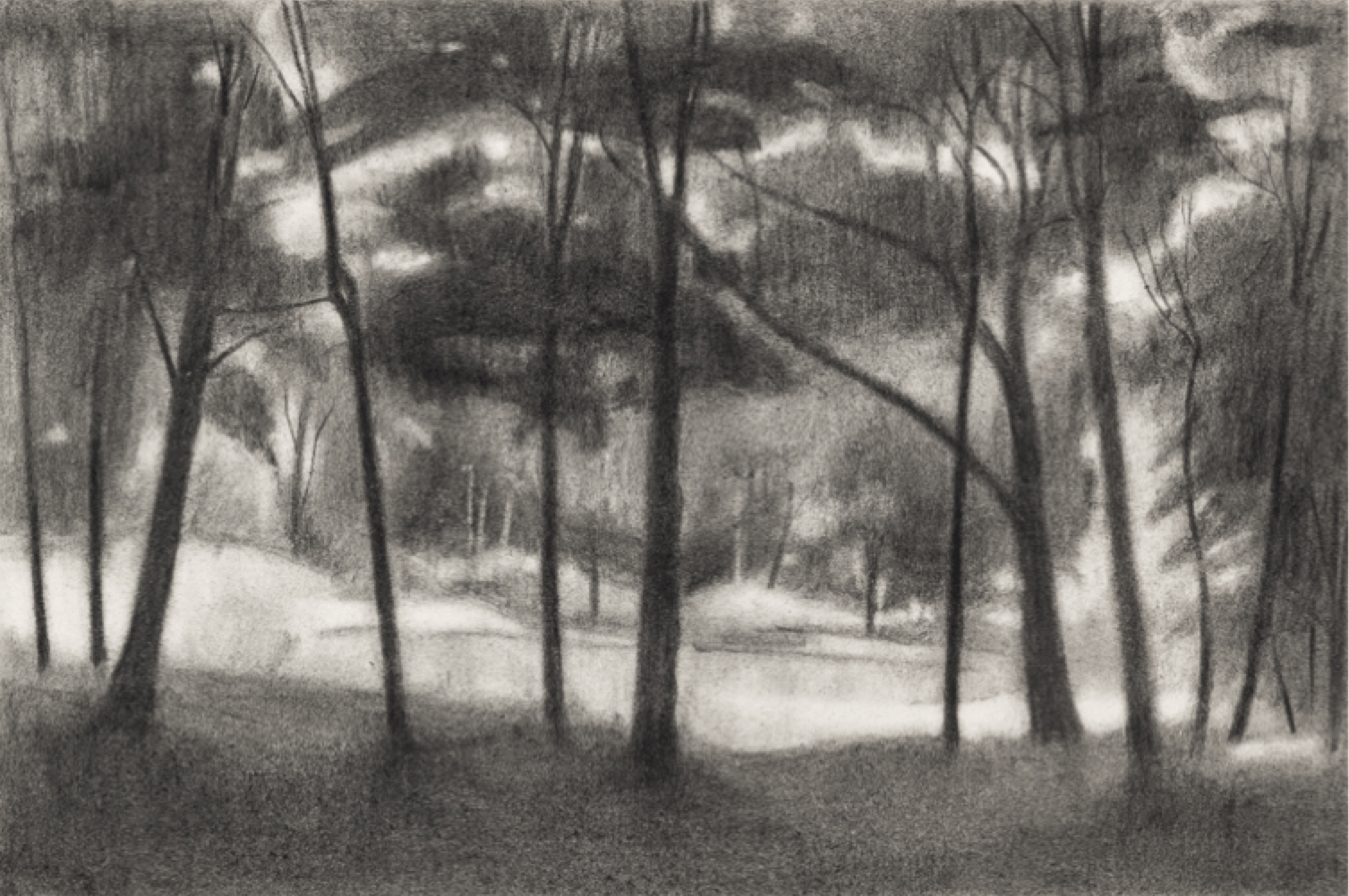Ron Milewicz: Light Takes the Tree, Drawings
New York Studio School, New York
March 11 – April 14, 2019
The title of Ron Milewicz’s elegant show “Light Takes the Tree” reveals a painterly proclivity. Heinrich Wolfflin’s term “painterly” describes the foregoing of “tangible design” for luminous merging of outlines and volumes, toward limitlessness. 1 Landscape moves easily in that direction—its individual aspects assembling exponentially into an indiscernible whole. Its parts in a work of art are bound by the artist’s compositional gestalt.
Milewicz’s ordered visions pace the viewer deliberately through clear ranges of space. In “Sugar Maple 2” the central tree holds as the eye weaves between trees struck by sunlight on the left, and shaded ones retreating on the right. Complex yet discreet configurations of figure and ground, activated by erasure of sky, play across the picture plane, as well as from top to solid shadow at the bottom. Balance is furthered by a tree at the opposite edge, and movement is anchored. Stillness prevails, the way actual scenes seem to suspend themselves before our gazes.
Like Giacometti and Morandi, Milewicz values the relationships between parts over the individuality of objects, with results that are likewise a mysterious mix of honest, modest and superlative. Views pan out from lucid foregrounds that keep the woods at a safe, cerebral distance. “Trees and Pond” has an ample, comfortably shielded vantage from which to peer. Among a plain assortment of trees, a falling branch is a quiet bolt of light midway into “Evening of Light”. Milewicz advocates time and place to discover and contemplate before delving into experience.
Texture is everywhere suppressed, and so therefore, is the artist’s hand. Soft forms cohere and dissolve as though by the scouting eye’s focus. Slight erasures edge out sharply here and there to gently jar overall smoothness. A small cedar’s layers thus coarsely defined in “Maple and Cedar” are in temperamental contrast to the sinewy branches of a relatively theatrical maple.
When tonal range expands and shapes verge on flatness (particularly in meadow views), and within patterns of light and dark, the mannerisms of Marsden Hartley’s buoyant and even Albert Pinkham Ryder’s bold landscape forms are evoked. Sensuality spreads in “Fall” as a felled tree flows like syrup down to the right. When the tonal range is limited instead, as in “Cold,” optical sensitivity and emotional constraint are reminiscent of Edwin Dickinson’s beachscapes.
The exuberant tree in “Sun and Oak,” flailing among shining swerves of light, could almost function in a florid Charles Burchfield scene. But majesty is checked by the softly recorded, reflected light on the trunk, and by concise vertical darks that carefully recede. Despite the vast scale landscape implies, and Milewicz’s artful designs, his calm enthusiasm conveys unworldly beauty.

Notes
1 https://www.csus.edu/indiv/o/obriene/art192b/heinrich-wolffin_principles-of-art-history.pdf<
